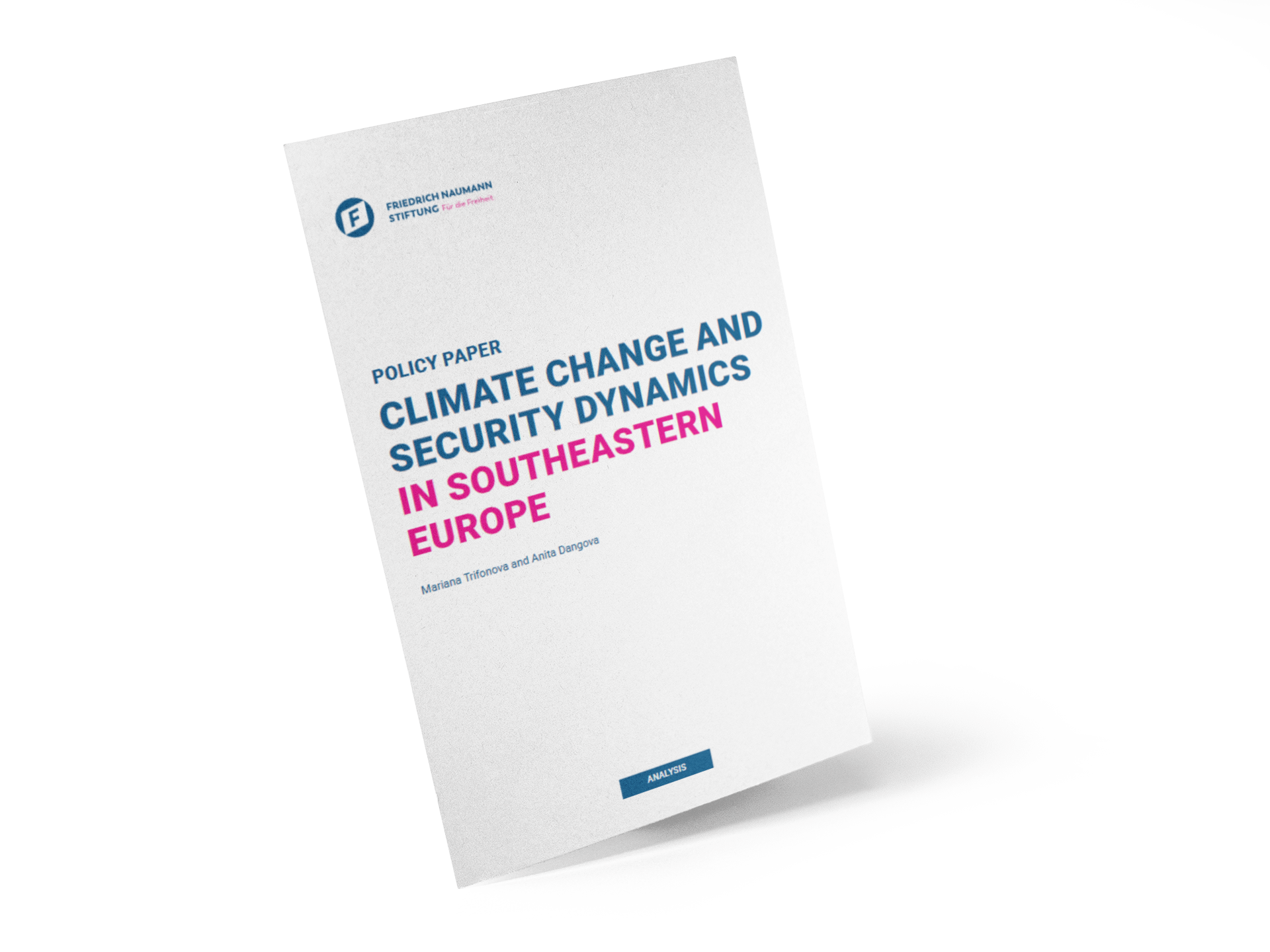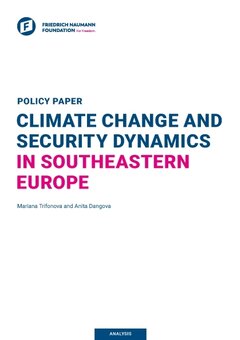Publikation
Klimawandel und die Dynamik der Sicherheit in Südosteuropa

Climate change, as a result of human activity, is a far-reaching phenomenon affecting essentially all continents and regions of the world. Globally, extreme weather events have registered increased frequency and severity. According to the EASAC study[1], “floods and other hydrological events have quadrupled since 1980 and have doubled since 2004”. Additionally, “extreme temperatures, droughts, and forest fires, have more than doubled since 1980. Meteorological events, such as storms, have doubled since 1980.”
The European Environmental Agency (EEA) acknowledges that all parts of Europe are affected in various degrees but highlights that “Southern and south-eastern Europe is projected to be a climate change hotspot as it is expected to face the highest number of adverse impacts. This region is already experiencing large increases in heat extremes and decreases in precipitation and river flows, which have heightened the risk of more severe droughts, lower crop yields, biodiversity loss and forest fires.”[2]
This observation echoes the belief that the region of Southeastern Europe is particularly vulnerable to climate change and the negative effects of global warming. SEE’s susceptibility to climate change stems from its geographic position and topography, which also makes it climatically diverse. The region encompasses the Balkan peninsula and its vicinity, thus bearing some similarities to Southern Europe and the Mediterranean, while its northernmost parts share the characteristics of the continental climate observed in Central Europe. Although there is no universally established boundary for the SEE region, it is widely considered to comprise three EU member states (Bulgaria, Romania, Croatia) as well as the Western Balkan countries. Albania, North Macedonia, Serbia, Montenegro and more recently Bosnia and Herzegovina have the status of EU candidate countries, while Kosovo[3] is considered a potential candidate. Out of all of them only Serbia, Bosnia and Herzegovina and Kosovo are not NATO members. Broader definitions of the SEE region may also include other EU members such as Slovenia to the west and Greece to the south, together with long-term EU candidate status holder Türkiye. However, for the purpose of this paper, the authors adopted a narrower concentration on the three newest EU members and the Western Balkans due to socio-economic and developmental similarities. A special focus is placed on Bulgaria and Romania as both are EU and NATO members with close proximity to the ongoing security crisis that is unfolding due to the war in Ukraine. Also, the Western Balkan countries Serbia and Albania, are examined more closely, since they illustrate two vastly different foreign policy and security orientations.
The political diversity in the region poses an inherent challenge to analysing the climate change implications for the region as the majority of studies and databases differentiate between the Western Balkans as a sub-region, while Bulgaria, Romania and Croatia are often examined in a comparative EU-wide perspective or grouped with other countries from Central and Eastern Europe.
Nevertheless, several overarching observations can be made for the region of Southeastern Europe as a whole. Despite the observed regional variations in temperature and precipitation levels, the average temperature is clearly increasing. In the Western Balkans sub-region it has increased by 1.2 °C within two decades.[4]
Extreme weather events have become more frequent across the region, showcasing the need for efficient and timely climate adaptation strategies.
[1]EASAC, “Extreme weather events in Europe: Preparing for climate change adaptation: an update on EASAC’s 2013 study”, available at https://easac.eu/fileadmin/PDF_s/reports_statements/Extreme_Weather/EAS… (last accessed 29 September 2022).
[2] EEA Report No 1/2017, Climate change, impacts and vulnerability in Europe 2016, available at https://www.eea.europa.eu/publications/climate-change-impacts-and-vulne… (last accessed 25 January 2023).
[3] This designation is without prejudice to positions on status, and is in line with UNSCR 1244/1999 and the ICJ Opinion on the Kosovo declaration of independence.
[4] Regional Cooperation Council Secretariat, “Study on Climate Change in the Western Balkans Region (2018), available at :
https://www.rcc.int/download/docs/2018-05-Study-on-Climate-Change-in-WB… (last accessed 29 September 2022).

